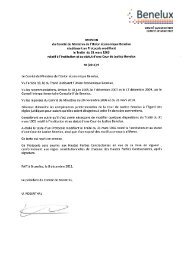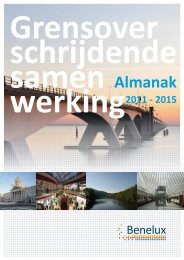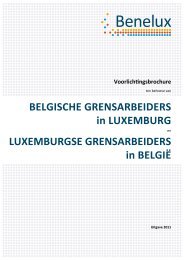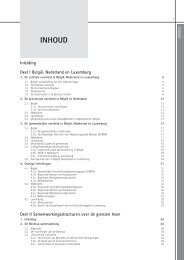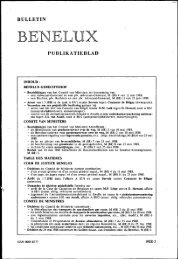The North Seas Countries' Offshore Grid Initiative - Initial ... - Benelux
The North Seas Countries' Offshore Grid Initiative - Initial ... - Benelux
The North Seas Countries' Offshore Grid Initiative - Initial ... - Benelux
You also want an ePaper? Increase the reach of your titles
YUMPU automatically turns print PDFs into web optimized ePapers that Google loves.
Executive Summary<br />
Recognising the important contribution the resources of the <strong>North</strong> <strong>Seas</strong> could make<br />
towards achieving renewable targets up to 2020 and carbon targets beyond, the <strong>North</strong><br />
<strong>Seas</strong> <strong>Countries'</strong> <strong>Offshore</strong> <strong>Grid</strong> initiative was formed as the responsible body to evaluate<br />
and facilitate coordinated development of a possible offshore grid that maximises the<br />
efficient and economic use of those renewable resources and infrastructure investments.<br />
<strong>The</strong> Memorandum of Understanding (MoU) was signed on 3 December 2010 by the 10<br />
countries around the <strong>North</strong> <strong>Seas</strong> represented by their energy ministries, supported by<br />
their Transmission System Operators (TSOs, organised in the European Network of<br />
Transmission System Operators for Electricity ENTSO-E), their regulators (organised in the<br />
Agency for the Cooperation of Energy Regulators ACER) and the European Commission,<br />
together forming the "<strong>North</strong> <strong>Seas</strong> <strong>Countries'</strong> <strong>Offshore</strong> <strong>Grid</strong> <strong>Initiative</strong> (NSCOGI)".<br />
<strong>The</strong> MoU breaks down the overarching objective into a set of deliverables to be taken<br />
forward, initially for a two year period, by three Working Groups (WGs): WG1 - grid<br />
implementation, WG2- market and regulation and WG3 - permissions and planning. Each<br />
WG is chaired by representatives of two countries’ energy ministries and coordinated by a<br />
programme board. This report sets out the initial findings of the TSOs’ study within WG1<br />
supporting the NSCOG1 final report.<br />
Go it alone, or do it together?<br />
<strong>The</strong> information contained in this report aims to evaluate the long-term development of an<br />
offshore grid structure in the <strong>North</strong> <strong>Seas</strong>. While some coordination already exists,<br />
nationally with the integrated connection of a number of offshore wind parks (e.g.<br />
Germany and Great Britain) and between nations in the development of interconnectors,<br />
this report seeks to answer the question of how best to exploit future offshore generation<br />
resources – by continuing to ‘go it alone’, or by ‘doing it together’? It therefore provides a<br />
view on how a meshed offshore grid might develop over the period 2020 to 2030 as the<br />
countries in the <strong>North</strong> <strong>Seas</strong> region advance towards a low carbon energy future. It is based<br />
on the governments’ best view of energy generation and demand in 2030 as expressed in<br />
summer 2011.<br />
<strong>The</strong> designs presented in this report are shown to illustrate possible electricity<br />
transmission system designs. <strong>The</strong>y do not represent a physical construction programme<br />
or the investment decisions of the involved Governments, TSOs or offshore generator<br />
developers. Actual development of the transmission systems in each of the <strong>North</strong> <strong>Seas</strong><br />
countries may differ significantly to those presented by this study, due to necessary<br />
assumptions around perfect functioning markets, absence of regulatory barriers and<br />
common assumptions on fuel / CO prices being made for this study.<br />
2<br />
Page 1-1



